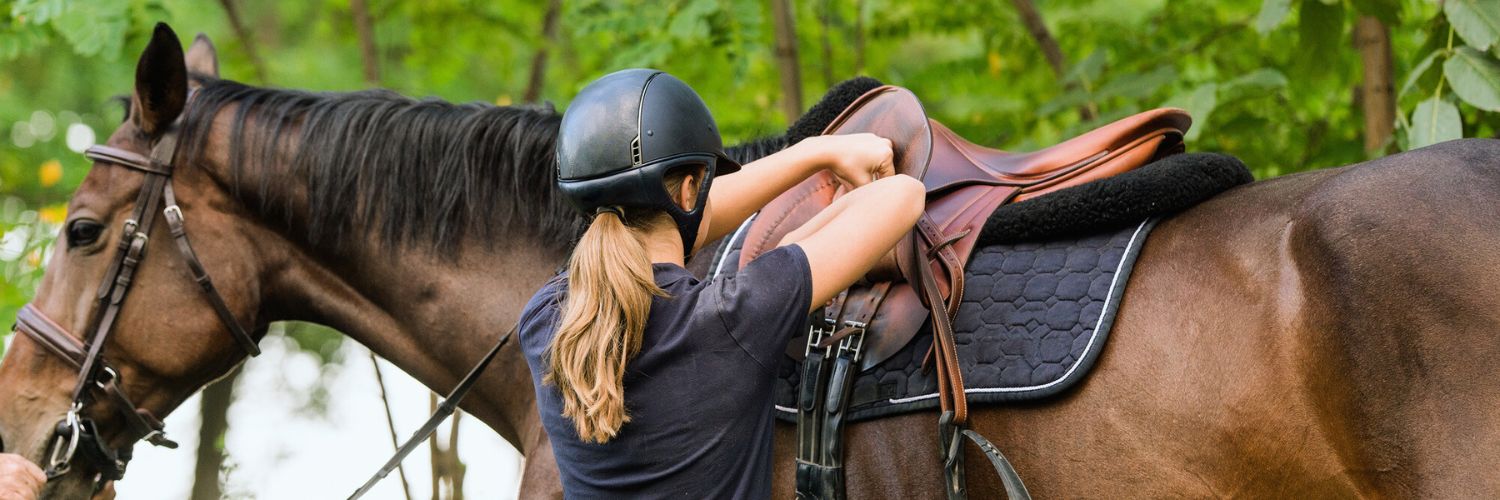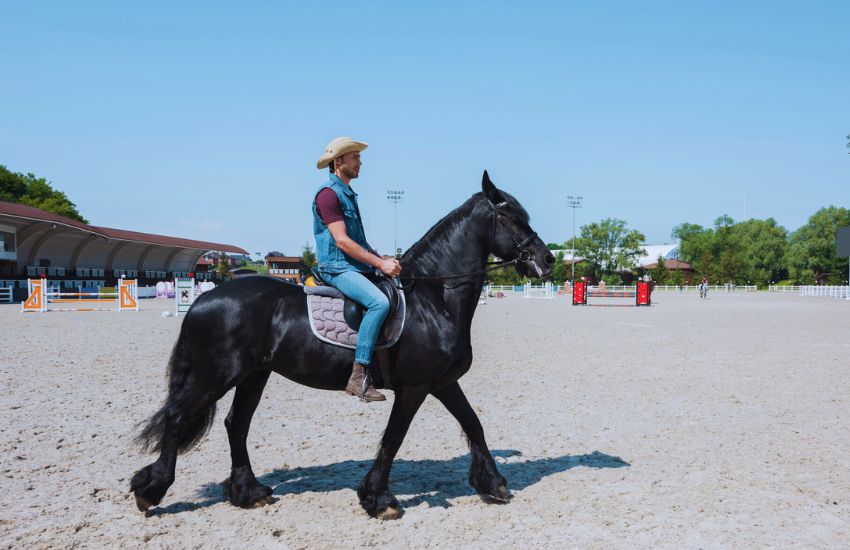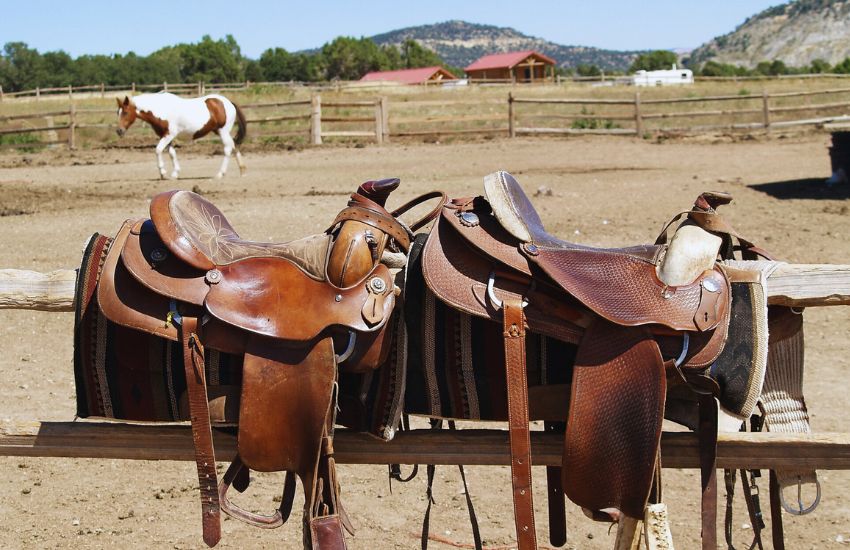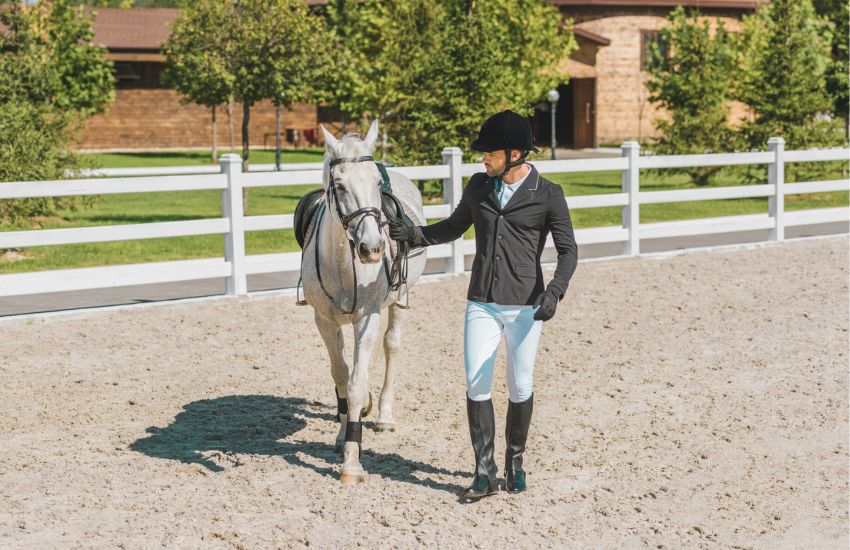shelter pets in need
Each order helps pets in need

First, however, there are some things you should know before jumping in that will make working with horses a lot easier. With that said, let's get started! Read on to learn everything you'll need to know to start tacking up your horse like a pro.
There are so many interesting facts we don't know about horses. In fact, the Equus caballas — a.k.a the modern horse we know and love — was not always how we see it today. There were many different types of horses that we have never had the pleasure of meeting, as most of them went extinct approximately 10,000 years ago.
These species included:
Horse species have also widely varied in size throughout their existence and evolution. However, their size changes have not seemed to follow any specific pattern. With time, they grew larger, only to shrink in size again.
However, species gradually grew larger with the changing and expansion of grasslands. They adapted to anatomy and behaviors we know from the modern horse (such as having one toe per horse's hoof and grazing on grass).
The domestication of modern horses goes back perhaps more than 5,000 years. It is believed that the origins of their domestication date to just after the Ice Age (approximately 10,000 years ago) when wild horses started to die out in all but Eastern Europe and Central Asia, the homes of short grasses, shrubs, and large amounts of dry land.
Scholars think that the people of these areas were the ones who domesticated the remaining wild horses, starting a human-to-horse bond that has developed into what it is today.

Horseback riding is a great sport and a fantastic bonding experience between humans and their horses. This activity has plenty of health benefits, such as developing the leg and arm muscles and improving balance, posture, and concentration. It is widely considered to be a very calming activity, as well.
While domestication may have started around 10,000 years ago, this domestication was not used for horseback riding. Instead, horses were domesticated as a source of food and clothing.
The "first ride," a significant turning point in the history of the horse, most likely took place in 4200 BC to watch over other horses more easily and herd cattle and sheep. It also had an immense benefit on traveling, which would be a much quicker process on horseback.
As time passed, horses were used to help with many tasks. Horses were used for pulling heavy loads of supplies, both before and after the invention of the wheel.
After the wheel came things like carts, chariots, and devices for cultivating fields—horses were one of the hardest workers in history. The term "workhorse" isn't used for nothing!
Now that you've learned some facts about horses and horseback riding as it led up to its place in modern society, it's time to learn how to tack up a horse.
If you miss something or incorrectly dress your horse, it will affect the comfort of you and the animal and cause an accident while riding. Improper tacking could cause you to lose control of your horse or even fall off if something is loose or comes undone.
First things first: what does tacking up your horse even mean? The word "tack" simply refers to any piece of equipment for the domesticated use of horses.
This could mean the horseback riding saddle, saddle pad, bridle, halter, reins, bits, stirrups, or all of the above — including any equipment not mentioned in that list. Equipping your horse with these pieces is called "tacking up."
This first step is crucial for the process. Before starting, you must secure your horse to ensure efficiency and safety while tacking up. You can do this with cross ties or by securing them to a hitching post. Another good safety tip is to use slip knots while securing. This will allow you to quickly untie and release your horse if something happens.
When tacking up your horse, it's essential to always start with a squeaky clean and well-groomed horse. Although this step may seem unimportant in the grand scheme of things, grooming before equipping will help guarantee your horse's comfort and avoid pain while riding.
Always make sure to groom the areas where the tack will sit. For example, dirt under the saddle could rub while you ride and cause saddle sores on your horse. Also, ensure that your horse's hooves aren't loose, and clean them with a hoof pick.
Before putting on any equipment, ensure your horse's coat is brushed and free of any dirt or debris, paying close attention to sensitive areas such as the girth and cinch areas. It's also important to check your four-legged baby for any signs of discomfort or injury before tacking up.
Once you've ensured that your horse is clean and comfortable, take the time to properly adjust all pieces of equipment, ensuring that they fit well and are not too loose or tight.

Now that you've correctly groomed your horse, it's time to start dressing. The first step in dressing is to place the saddle pad on your horse. You'll place the saddle pad on the horse's neck and then slide it down gently into place on the back.
Next, place the saddle on the pad and slide it back until it settles. You'll know it has settled when it no longer slides easily.
To secure the saddle, first buckle the girth on the horse's right side. On the left side, reach under the horse and pull the other side of the girth toward you, pulling it tight and then buckling it. Make sure to double-check that it is secure after tightening.
Before putting on the bridle, untie your horse. Place the reins over the horse's head and horse's neck in case you need to utilize quick control while adjusting the bridle. With your fingers on either side of the bit, push it into the horse's mouth and then slide the headpiece over the ears.
Buckle the throat latch loosely so as not to choke your horse. You should be able to fit a couple of fingers in the space between the throat latch and the horse's skin.
Now that you know how to tack up a horse correctly and have done so following the steps, you're ready to ride! This is an intimate bonding experience between you and your horse, so treat the experience with love and respect.
Now that you're officially ride-ready pick up some apparel from our shop and show your horse love with pride!

After a long ride, getting your horse untacked and settled in comfortably for the night is just as important as preparing them to ride—you can't just leave them in their horse stall as is. You've been out riding all day; now it's time for a well-deserved break for you both.
Give your horse a chance to stroll and cool off before dismounting. Their heart rate and body temperature need to come down gradually. Dismount and loosen the girth to allow them to breathe easily again. Walk them around as their breath returns to normal. Remove the bridle so they can have a good roll, scratch, and shake off the sweat.
Now for some pampering. Grab your brushes and go over their coat in smooth, long strokes. Pay extra attention to areas under the saddle or girth that may be irritated. Talk or sing softly to keep them relaxed. Give their mane and tail a good brushing and detangling, too.
Your trusty steed has earned their dinner. Provide plenty of fresh, clean water and a flake or two of quality hay. If you feed grain, measure out their usual amount. As they munch contentedly, you can rest easy knowing you've properly cared for your four-legged friend today. Thanks to your diligent tacking up and untacking, they'll be ready to ride another day.
Untacking and aftercare are just as vital as preparation. Your horse's health and happiness depend on the whole experience, not just the thrill of the ride. Take the time to cool them down, brush them out, and give them a well-deserved meal. Your faithful friend will surely appreciate it!
Tack is the horse riding equipment or tools needed to ride a horse.
An English saddle is smaller and lighter than the larger and heavier Western saddle.
In English riding, the rider grasps the reins with both hands and directs the horse's mouth movement by adjusting the pace and direction. On the other hand, the rider holds the reins with just one hand for Western riding.
A strap known as a girth attaches the horse's saddle to its body.
A breastplate is a piece of tack that stabilizes and stops a saddle from sliding backward.
Aren't you just glad that horses exist? Do you love horses or know someone who does? Check out our huge horse apparel collection, perfect for you and the equine lover in your life!
Leave a comment